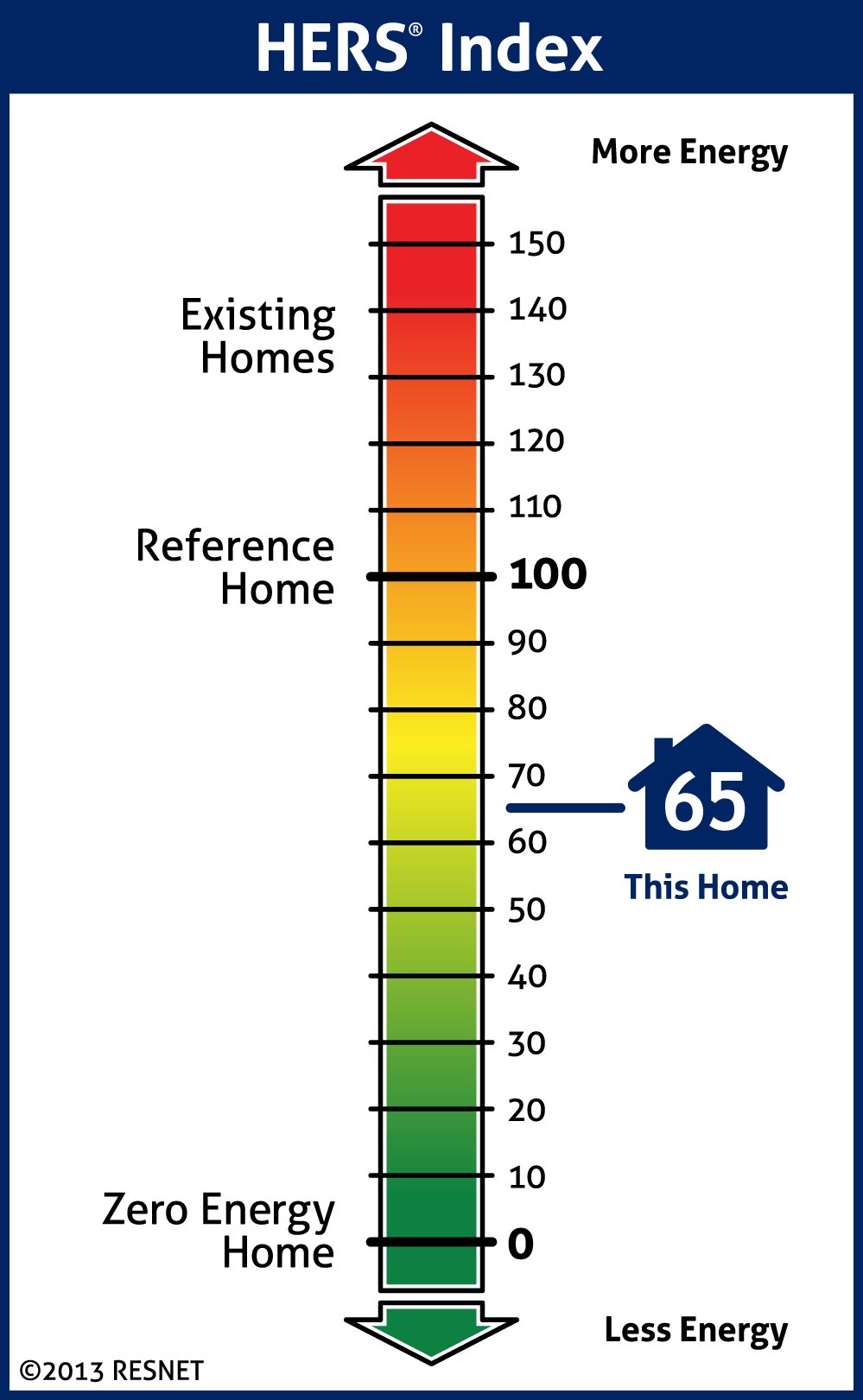Massachusetts Energy Code & the Future of “Building Green”
By Claire Wigglesworth
Did you know that every newly constructed home in Massachusetts — multifamily or single unit —has to pass an energy efficiency test before it can be sold on the market? The HERS score, or Home Energy Rating System, is the metric used to evaluate a home’s energy efficiency. This past summer, I worked in energy consulting, testing homes around Boston to comply with the state’s strict energy code. I learned that HERS is a flawed metric because it increases housing prices and encourages suburban sprawl. Let me break it down for you:
Most homes (single-family and duplex) in Massachusetts must achieve a HERS of 52 or below. 1 The lower the HERS score, the more energy efficient the home. HERS 52 indicates the home is 48% more efficient than a baseline home built in 2006. 2 Although seemingly arbitrary, this is the standard that RESNET has set and state governments have implemented in policy. 3 By next year, the standard for efficiency will be lowered to HERS 42. 4 This is even harder to achieve than HERS 52 and will leave developers and builders scrambling to upgrade their windows, insulation, air sealing, and to eliminate heat loss through thermal bridges. Our homes are now so air-tight they function more like plastic bags than breathable living spaces.
The problem with HERS as a metric of energy efficiency is that the parameters used in its calculation favor homes with a larger volume. Take air changes per hour (ACH), a measure of ventilation. ACH answers the question “How frequently does the total air volume in a conditioned space become completely removed and replaced within an hour?” A reasonably air-tight home will have between 1 and 3 ACH. 5 The optimal number can be tricky to reach; too little ventilation is dangerous as the home has no breathable air, while too much ventilation results in a ‘leaky’ house and poor HERS. Most homes struggle with getting their ACH low enough to achieve HERS 52. The ‘solution’ is to build a larger square-foot home; with volume included in the denominator of the equation, the larger the house, the lower the ACH. We are encouraging the construction of large, expensive, suburban homes.
Another key part of the HERS calculation is that ‘fancier’ windows lower your HERS. Solar heat gain coefficient (SHGC) is a parameter used to measure the percentage of solar radiation admitted, with optimal numbers between 0.27 and 0.30.6 The range is similarly tricky to hit; too high SHGC results in heat loss, while too low SHGC makes it difficult to absorb heat when it is needed in cold winter months to passively heat7 a New England home. Generally speaking, lower SHGC means the home is more air-tight. However, windows with low SHGC are also much more expensive (either double or triple-paned). The trickle-down costs of building air-tight homes ultimately burden consumers with more costly homes. Massachusetts is already the third-most expensive state to live in the US8, do we really need to encourage the use of more expensive materials, even if they are energy efficient?
Let me leave you with a lingering thought. Nowhere in the Massachusetts Energy Code are the GHG emissions of construction costs taken into account. Manufacturing materials, including steel and concrete, and the transportation emissions of driving to and from construction sites have immense carbon footprints. As cities grow and expand, the building industry is investing in large single-family suburban homes instead of adding units to existing homes. We need to start encouraging energy-saving through density, not arbitrary energy efficiency standards like HERS. In the age of “Building Green,” we must stop to think about what ‘green’ actually means.
1 Page 5, https://www.mass.gov/doc/2023-stretch-energy-and-municipal-opt-in-specialized-building-code-faq/download
2 https://www.hersindex.com/know-your-homes-hers-index-score/hers-index-understanding-the-hers-score/
3 RESNET ( Residential Energy Services Network) is the nonprofit responsible for setting energy efficiency standards for state governments to implement.
4 Page 5, https://www.mass.gov/doc/2023-stretch-energy-and-municipal-opt-in-specialized-building-code-faq/download
5 https://cleanair.camfil.us/2021/10/22/how-to-calculate-air-changes-per-hour
6 https://www.glass-rite.com/what-is-shgc/
7 Passive heating is a form of heating that uses solar radiation collected through windows and doors to provide warmth inside a home. This lowers energy usage and utility costs.
8 https://www.bostonglobe.com/2023/06/14/business/income-to-afford-2-bedroom-apartment-in-massachusetts/


